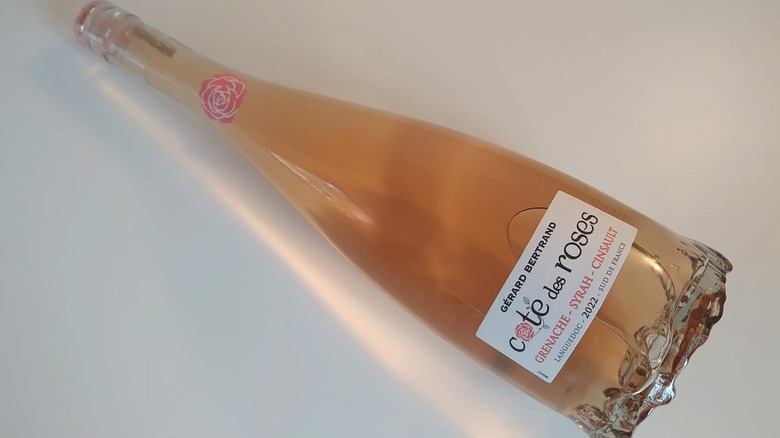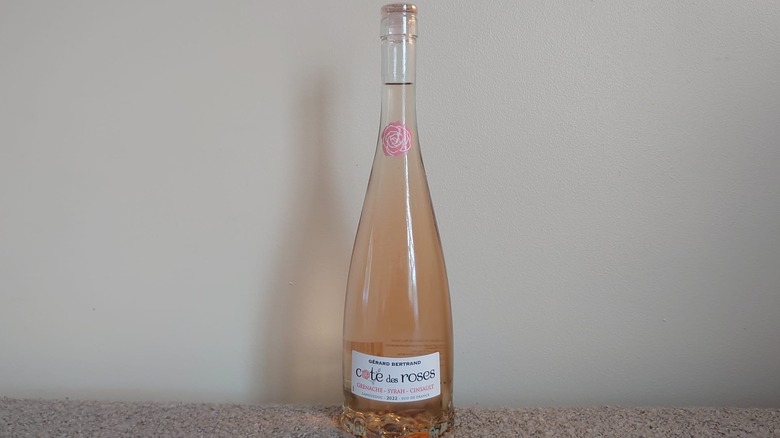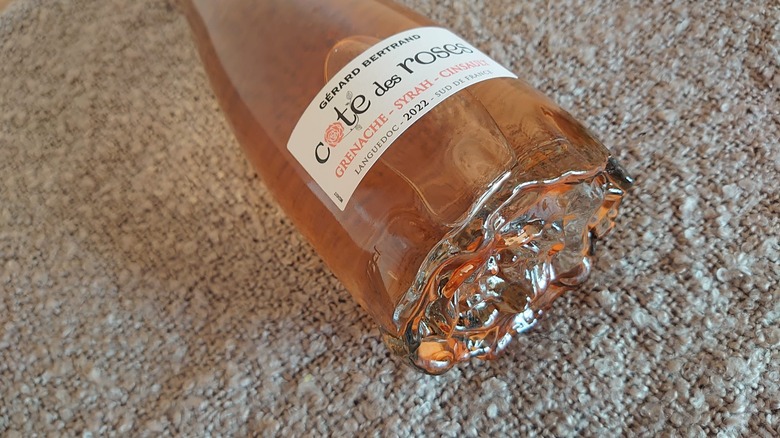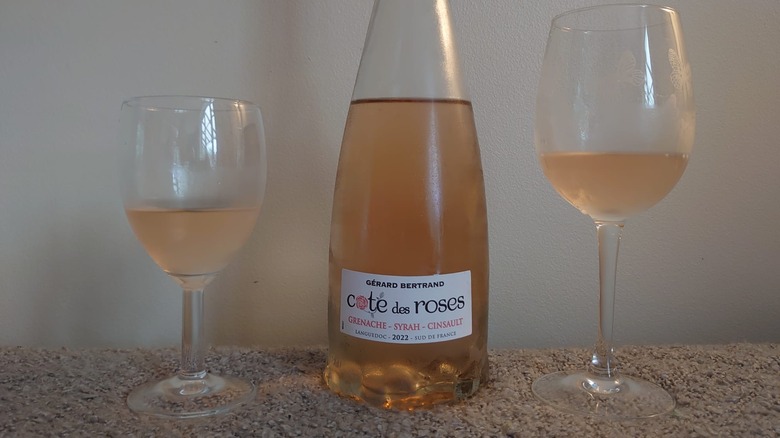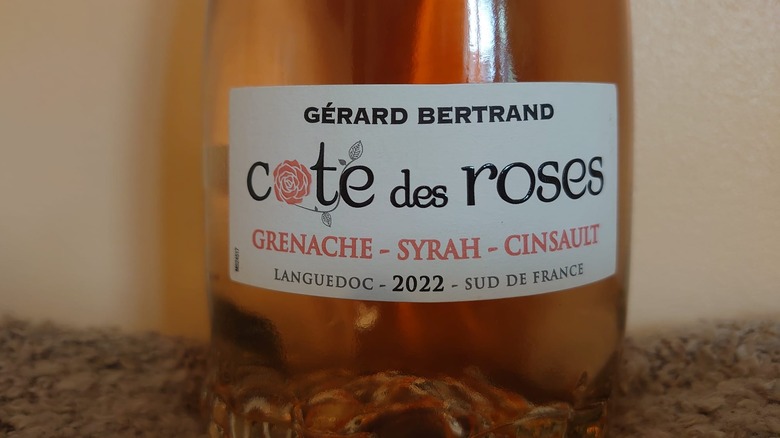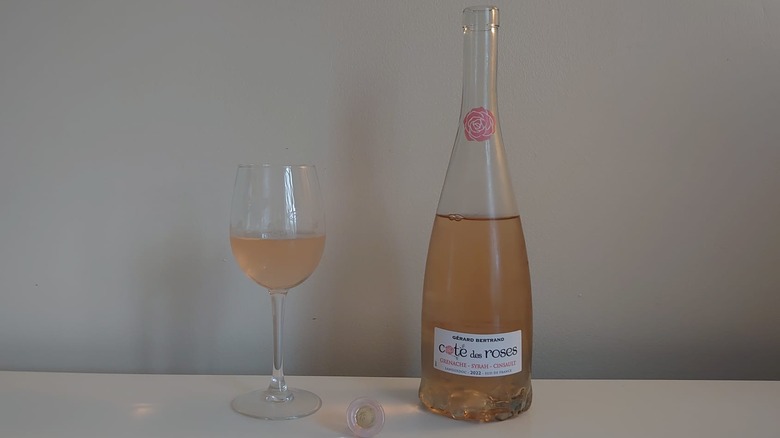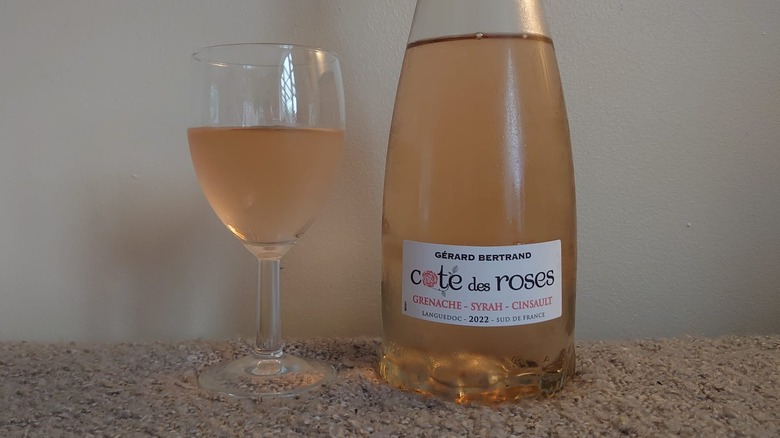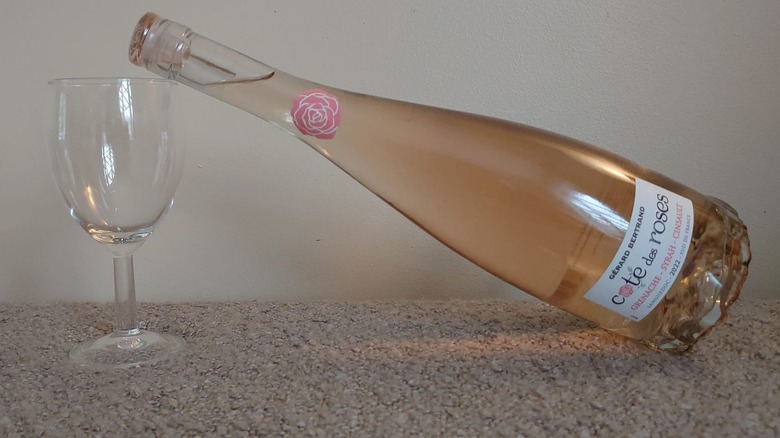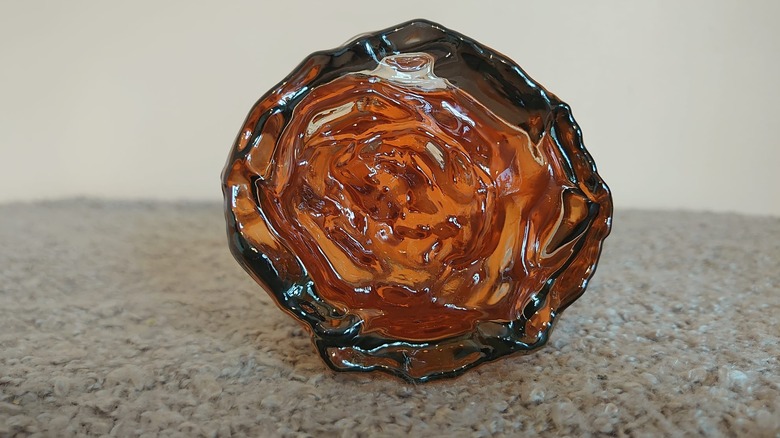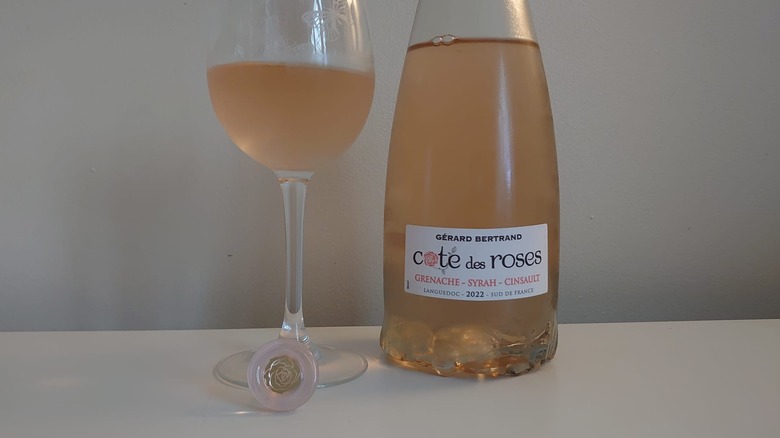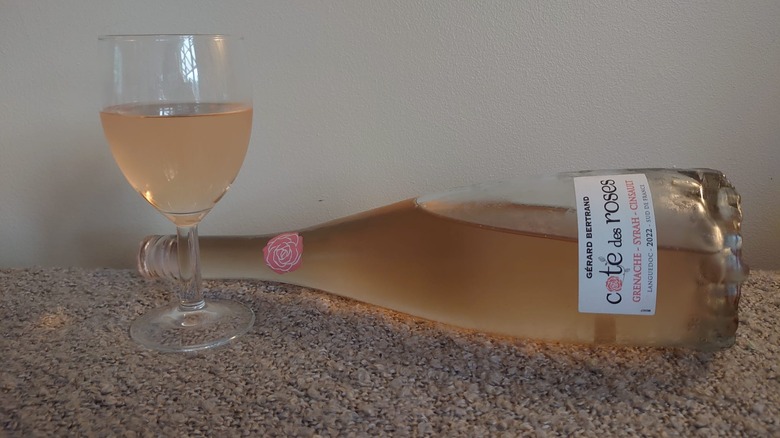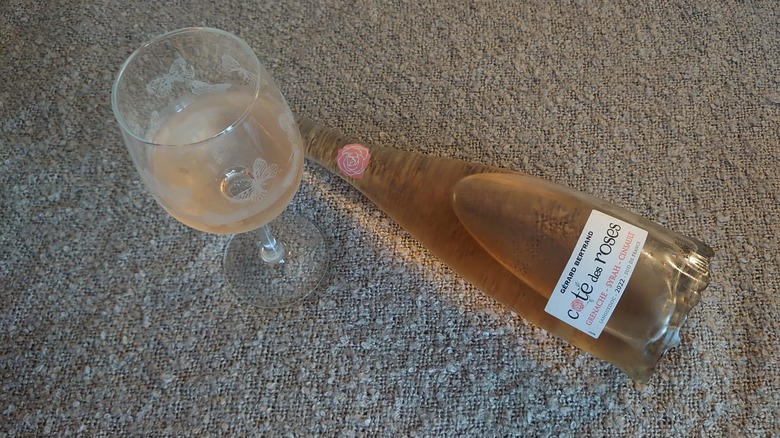Bertrand Cote Des Roses Rosé: The Ultimate Bottle Guide
When the time comes to select an elegant yet affordable rosé, your options may seem limited. Reasonably priced wines can be hit-or-miss in the taste department, but the Bertrand Cote des Roses rosé is one that requires serious consideration. Crafted in the Languedoc region in Southern France, it's impressive not only for how it hits your tastebuds but also for how the bottle catches your eye. The rose-shaped base is a visual highlight, but as with any type of alcohol, a beautiful bottle doesn't always mean a beautiful product.
Here, I'll take a look at exactly how good this wine is and how it compares to other drinks at its price level, as well as some pricier bottles. This review comes from my own personal tasting experience with a bottle that I purchased. This is to ensure that you get an authentic and trustworthy evaluation. With its fresh notes of red berries and citrus, this bottle is ideal for those who love both fruity and dry wines. This quality also makes it an ideal companion for a wide range of foods. Below, we'll dive deeper into those tasting notes, along with plenty of insightful information on this fascinating bottle. Join me as we look at whether or not the Bertrand Cote des Roses rosé should be in your wine collection.
History of Bertrand Cote des Roses rosé
Many wine brands have existed for a century or more, but Gérard Bertrand is a much more recent creation. Georges Bertrand was a well-respected winemaker in the Languedoc region who suddenly passed away in 1987. His son Gérard took over the family estate, and in 1992, he founded the wine company in his name. Starting from just one estate, the company has vastly expanded its operation and now consists of 17 different estates, all in the Languedoc region. This has helped the company to consistently increase wine production and introduce a variety of brands.
Along with Cote des Roses, Gérard Bertrand offers six other brands. Arguably the most well-known, the Cote des Roses series was only released in 2013. In just over a decade, it spread globally due to its excellent value. Bottle designer Ecole Boulle helped created something truly unique with the bottle's rose-shaped base, replaceable glass stopper, and elegant design. It's the type of commitment to quality you'd expect from a premium brand, but Gérard Bertrand wines have remained affordable, approachable, and refined.
It comes from the Languedoc-Roussillon region of Southern France
Each region in France has its own unique impact on wine, and this Cote des Roses rosé comes from the Languedoc-Roussillon region. Often shortened to just Languedoc, it stretches along the France-Spain border on the Mediterranean coast. This region is special for many reasons, one of which is its diverse terroir. The terroir is the natural environment in which wine is produced, and it's vital for coffee, wine, and a variety of other drinks. It mostly relates to the soil type but also concerns the topography and climate of the region. Languedoc's terroir is quite diverse and includes a variety of soils, including limestone, clay, schist, and gravel. This means that more or less any grape variety can be grown there, and its wines can be equally diverse.
As stated on the bottle, this allows the Cote des Roses rosé to benefit from grenache, cinsault, and syrah grapes. The climate also makes a difference. The hot, dry summers and mild, wet winters allow the grapes to ripen fully, giving them a rich, concentrated flavor that's not too acidic. The region's winemaking history dates back to Ancient Rome — any winemaker in the Languedoc-Roussillon can lean on hundreds of years' worth of knowledge to concoct their creations. Simply put, winemakers from Languedoc-Roussillon have no excuses, as the region features everything necessary to create an amazing bottle.
What does Bertrand Cote des Roses rosé taste like?
An affordable wine that tastes great — can it be true? While expectations must remain realistic, this wine would more than justify a higher price tag. It's a fresh and elegant wine that beautifully captures the range of grapes with which it's made. The nose is quite muted, but after allowing the aroma to develop, you can detect a range of lovely smells. At first, you'll start to smell some strawberries and raspberries, which dominate your senses. These are followed by more subtle hints of grapefruit and floral undertones. It's not a nose you'll return to with every sip, but it's still enjoyable.
Upon tasting this rosé, you'll instantly notice a balance of flavors, as no one of them dominates your palate. Those red fruits from the nose transfer to the palate and provide a crisp, refreshing mouthfeel. The acidity is bright, making it an excellent choice for warm summer days. A delicate mineral taste develops toward the end, giving it a bit more added depth. Have I had better rosé wine? Of course, but I paid a lot more for it. A smooth finish confirms this as a wine perfect for a wide range of different occasions. If you're not sure whether or not you should bother buying it, it's pretty affordable, which means you have little to lose by giving it a try.
How is Bertrand Cote des Roses rosé made?
This wine's production starts with the unique terroir in which it's made. As I've mentioned, the terroir in the Languedoc-Roussillon region is unique and can produce high-quality grapes. Each of the three grapes in this wine's combination is carefully harvested separately; this is usually done in the morning to maintain freshness and reduce oxidation. Before these grapes are crushed, they're sorted to ensure only the best grapes are used. The grapes are then pressed, with only the highest-quality juice being kept for fermentation.
This is completed at cool temperatures and can last up to 30 days, keeping the Cote des Roses rosé fresh and fruity. After any impurities are removed, the wine is almost ready for bottling. Firstly, a special blending process ensures consistency and balance within the wine before it's bottled. The final step is pouring the finished wine into its beautiful vessel before it eventually appears on shelves for us to enjoy.
How to drink Bertrand Cote des Roses rosé
To appreciate this wine, you simply need to avoid wine-tasting mistakes and follow standard protocol. This wine is best served chilled, so putting it in a standard refrigerator for around 30 minutes should be enough for it to reach the desired temperature. This boosts its freshness and allows you to enjoy its aromatic profile. If you don't want to serve it straight from the fridge, an ice bucket is a good substitute. A standard wine glass will work for this rosé, as it doesn't have a standout aroma, but a slender glass is the best option for nosing. Once you pour, do so gently to avoid excess aeration. Now you're good to go.
Ideally, you should only fill the glass halfway (at most) so you have room to swirl it and release its aromas. This wine may not have the greatest nose, but this step is still worth doing for any wine. To taste it properly, start with small sips and let the wine linger on your palate. You can also pair this wine with food, especially dishes from Languedoc-Roussillon. Its crisp acidity lends itself to a wide range of dishes, such as seafood, pasta, and grilled vegetables. If you love charcuterie, it's great for that, too! It's a versatile wine that's perfect for drinking outside on a warm summer day.
Is Bertrand Cote des Roses rosé expensive?
You can get plenty of cheap wine bottles for anywhere between $7 and $10. This rosé isn't quite in that ballpark, but it's not far off. With an average price of around $15, it can often be found for a little cheaper if you shop around. This means that it strikes an interesting price point: It appeals to those who want to look for budget wines but still want to enjoy a more elegant experience. This makes the wine appealing to not only casual drinkers but also those with more discerning palates.
Low cost often means a less impressive product, but this bottle demonstrates that price doesn't always reflect quality. The climate and terroir of the Languedoc-Roussillon region means that an abundant variety of grapes are available to craft a rosé. As is always the case, the pivotal price question is whether or not the wine provides value for your money. Here, the answer is an unequivocal yes. There are, of course, many better rosés, but not at this price point. It offers a pleasant tasting experience that will confirm to almost any drinker that their money was well-spent. We all have our personal preferences, but this is a sure winner for anyone who likes affordable rosés.
Bertrand Cote des Roses rosé vs Cote des Roses sauvignon blanc
The Cote des Roses brand encompasses a variety of great wines. Along with its rosé, it offers a pinot noir, sauvignon blanc, and Chardonnay. Of those, I thought the sauvignon blanc would most appeal to rosé drinkers and therefore would be an apt comparison. In contrast to the rosé's use of three grapes, this wine unsurprisingly uses just the sauvignon blanc variety. Its nose is also a bit more aromatic than the rosé's. It has bright citrus notes and hints of orchard fruits, plus a lovely floral element.
On the palate, it's noticeably livelier than its brand rival. As with the rosé, it's a beautifully refreshing wine, but this one is much zestier. Given its pronounced acidity, it pairs well with many of the same foods, especially lighter dishes like seafood and salads. In terms of pure tasting quality, it's hard to split them. Both have the affordable quality of Gérard Bertrand, and you likely won't regret buying either. I would say that the rosé is a little more versatile and better for a wider range of food pairings and occasions. If you think you'd prefer a more vibrant drinking experience, however, the sauvignon blanc may be right for you. If you generally enjoy a variety of different wine types, it's a great idea to try both.
Bertrand Cote des Roses rosé vs Bleu de Mer Rosé
I've just compared this wine with another from the Bertrand range, but how does it compare against another popular rosé? I thought the Bleu de Mer rosé was a good choice, as not only does it have a similar price point, but it's also from the same Languedoc region in southern France. While they have many similarities, these are two distinctly different wines. While Cote des Roses rosé uses grenache, syrah, and cinsault grape varieties, the Bleu de Mer rosé just uses grenache and cinsault. The difference is noticeable in the color, as the Bleu wine has a slightly darker tone.
This reflects its more robust flavor profile. Both wines showcase red berries, and the Bleu wine also has a touch of fresh watermelon. Its livelier nature may be preferable to some, with the Gérard Bertrand rosé having more of a simple elegance. This contrast means that while Cote des Roses is better paired with lighter food, Bleu de Mer can be paired with denser food like barbecue. For elegant complexity, choose the Bertrand Cote des Roses rosé. If vibrant fruitiness is what you're after, opt for the Bleu de Mer brand. Which one you prefer will come down to personal preference, but both are beautiful, affordable wines.
Its vineyards are biodynamically farmed
For some companies, sustainability is simply a buzzword used to keep consumers happy. For Gérard Bertrand, it's seemingly much more. The brand is leading the charge to create sustainable standards within the industry. With its environmentally conscious practices, the company has shown that it's possible to grow your global appeal while still being environmentally conscious. The areas that receive the most attention are its organic and biodynamic farming methods, which make a few important changes to standard farming. One of these is foregoing synthetic pesticides or fertilizers. Instead, it takes a more natural approach that leads to higher-quality grapes.
Additionally, this lack of synthetic fertilizers means that those grapes are more closely reflective of the soil in which they were grown. There are other significant changes, too. One of these is drip irrigation, which minimizes water usage. Along with this, the company uses cover cropping to reduce the need for pesticides. Many winemakers may think that being organic or biodynamic would increase costs and workload, reducing the chances of their company's success; Gérard Bertrand has shown that you can have the best of both worlds, and his success could well inspire others to embark down a similar path.
Who is Gérard Bertrand, the man?
We've talked a lot about Gérard Bertrand, the brand, but who is Gérard Bertrand, the man? His professional life didn't start in the vineyards, but rather in the rugby fields of France. Born in the Languedoc region for which he's still so passionate, he followed in the footsteps of his father, who operated his own wine business. Bertrand was always fascinated with the winemaking process but initially pursued rugby, reaching the top level of the sport. Since he earned very little from rugby, however, he continued making wine with his family and playing on the weekends.
After his rugby career ended, his full-time transition into the wine business was an easy one. Following his father's death, he took over the family estate and ended up creating his own brand. Under his leadership, the estate flourished. This estate was Domaine de Villemajou, but it has now expanded to about a dozen estates across the south of France. His innovative and successful approach to winemaking has bolstered his reputation, and the brand only gets stronger. His fascinating story demonstrates that whether in the vineyard or on the rugby field, he knows all about leadership and commitment.
Gérard Bertrand hosts a yearly jazz festival
Gérard Bertrand has a passion not only for wine but also for music. Each year, the brand hosts a renowned jazz festival on its grounds. It's a perfect celebration for anyone who loves both music and wine. Known as Jazz a L'Hospitalet, it's hosted at one of Bertrand's estates, the Château l'Hospitalet. The festival started in 2004 and often features a color theme so its beautiful decorations can fit the beautiful surroundings. Attendees can not only enjoy the picturesque landscape of Languedoc in summer but also marvel at the full vineyards.
Those in attendance can expect to enjoy plenty of wine and an array of delicious food. Plus, even though it's called a jazz festival, performers from other music genres have played there as well, including Boy George and Nile Rodgers. This further showcases Bertrand's drive to do things a little differently and his commitment to focusing on more than just great wine. Whether it's the jazz festival or the biodynamic farming methods, Bertrand seems to care deeply about the Languedoc region's past, present, and future.
Methodology
Here at Tasting Table, we always want our reviews to be as authentic as possible. That's why I purchased this wine for a firsthand tasting experience. This allowed me to appreciate one of this bottle's newer releases and compare it to other rosé wines I've tasted. The result should be a bottle guide that, while influenced by my personal opinion, is both accurate and trustworthy.
